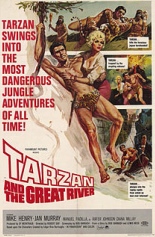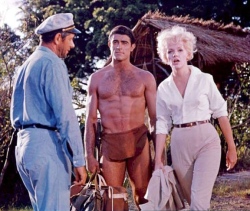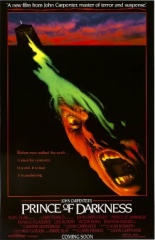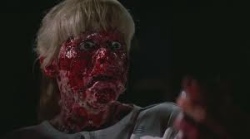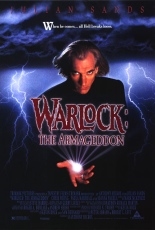
 Watching this sequel to 1991’s Warlock, I started to wonder if maybe a young Michael Bay had seen it before debuting with 1995’s Bad Boys. The third film by second-generation director Anthony Hickox (Waxwork), this second entry in the Warlock mythos not only shares part of a title with one of Bay’s films, but displays all of the same stylistic hallmarks that have made Bay both one of the successful and hated filmmakers of his generation.
Watching this sequel to 1991’s Warlock, I started to wonder if maybe a young Michael Bay had seen it before debuting with 1995’s Bad Boys. The third film by second-generation director Anthony Hickox (Waxwork), this second entry in the Warlock mythos not only shares part of a title with one of Bay’s films, but displays all of the same stylistic hallmarks that have made Bay both one of the successful and hated filmmakers of his generation.
Filled with pointless close-ups shot at strange angles, hilariously dramatic pull-ins and a complete sacrifice of character in favor of constant momentum, Warlock: The Armageddon, like most of Bay’s work, plays less like an actual movie than an abridged version of one with all of the potentially boring bits cut out.
And that is so not a bad thing.
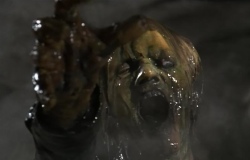 For those of you concerned about the plot, the film features a returning Julian Sands as the titular villain, an Antichrist who rises in anticipation of a long-awaited lunar eclipse and who must find a collection of ancient stones in order to help his father, Satan, escape from Hell and take over the living world. Stopping him are Chris Young (TV’s Max Headroom) and Paula Marshall (whom you know from a dozen cancelled shows … and my dreams), the youngest descendents of a tribe of California druids, whose deaths and subsequent resurrections make them the only warriors powerful enough to halt Sands in his tracks.
For those of you concerned about the plot, the film features a returning Julian Sands as the titular villain, an Antichrist who rises in anticipation of a long-awaited lunar eclipse and who must find a collection of ancient stones in order to help his father, Satan, escape from Hell and take over the living world. Stopping him are Chris Young (TV’s Max Headroom) and Paula Marshall (whom you know from a dozen cancelled shows … and my dreams), the youngest descendents of a tribe of California druids, whose deaths and subsequent resurrections make them the only warriors powerful enough to halt Sands in his tracks.
More goofy than scary, the movie features a lot of dated effects, but is made highly watchable, thanks to the game cast and Hickox’s stubborn refusal to give you enough time to dwell on the film’s many absurdities and enormous plot holes. Consider it a film for those of you who wish a certain “director” would stop wasting his “talents” on racist toy-robot sequels and get back to the gloriously stupid basics. —Allan Mott

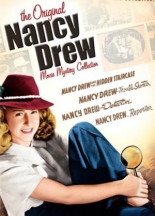
 Being the most pure mystery of the bunch,
Being the most pure mystery of the bunch, 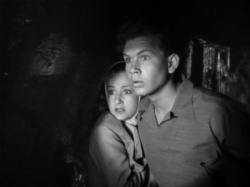
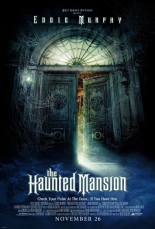
 Remember when Eddie Murphy used to be funny and he did that routine about how Hollywood doesn’t make horror movies with black people because they’d leave a haunted house at the first sign of suspicious goings-on? Well, now that Murphy is no longer funny, they made that movie. And he must no longer be black, either, because he goes in and stays in that haunted house.
Remember when Eddie Murphy used to be funny and he did that routine about how Hollywood doesn’t make horror movies with black people because they’d leave a haunted house at the first sign of suspicious goings-on? Well, now that Murphy is no longer funny, they made that movie. And he must no longer be black, either, because he goes in and stays in that haunted house.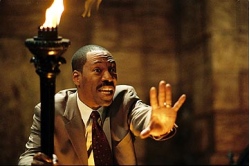 Skeletons come alive, apparitions appear everywhere, Jennifer Tilly’s disembodied head resides in a crystal ball, and yet nothing of significance happens in the entire hour and a half. Nothing but ass-numbing, migraine-inducing pain. This one makes any of the nonsensical
Skeletons come alive, apparitions appear everywhere, Jennifer Tilly’s disembodied head resides in a crystal ball, and yet nothing of significance happens in the entire hour and a half. Nothing but ass-numbing, migraine-inducing pain. This one makes any of the nonsensical 